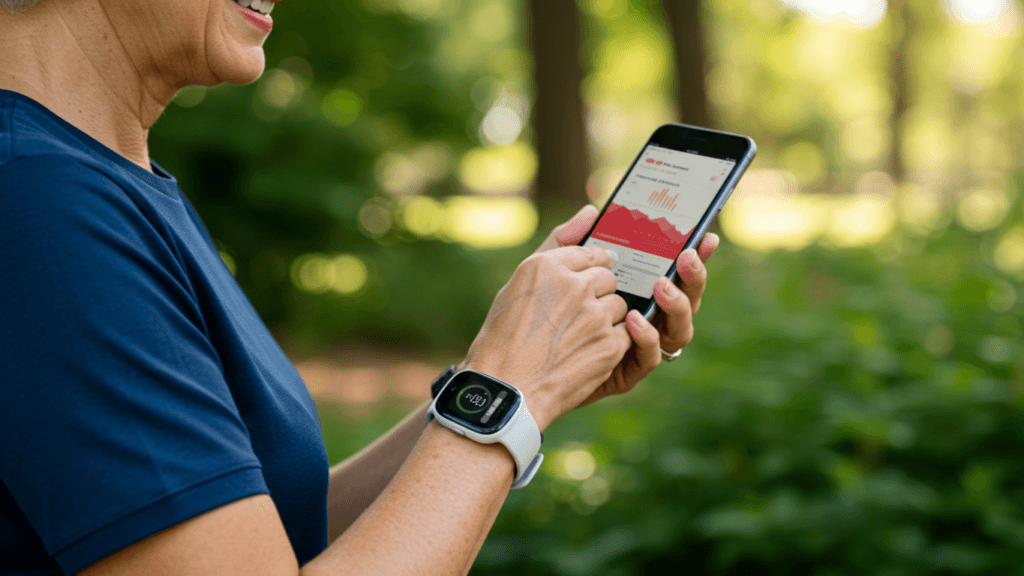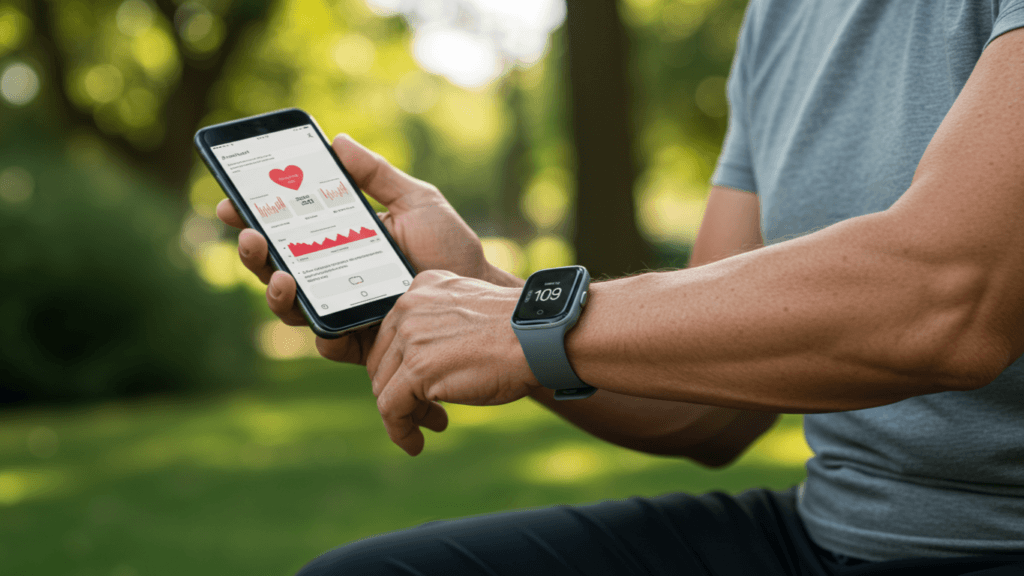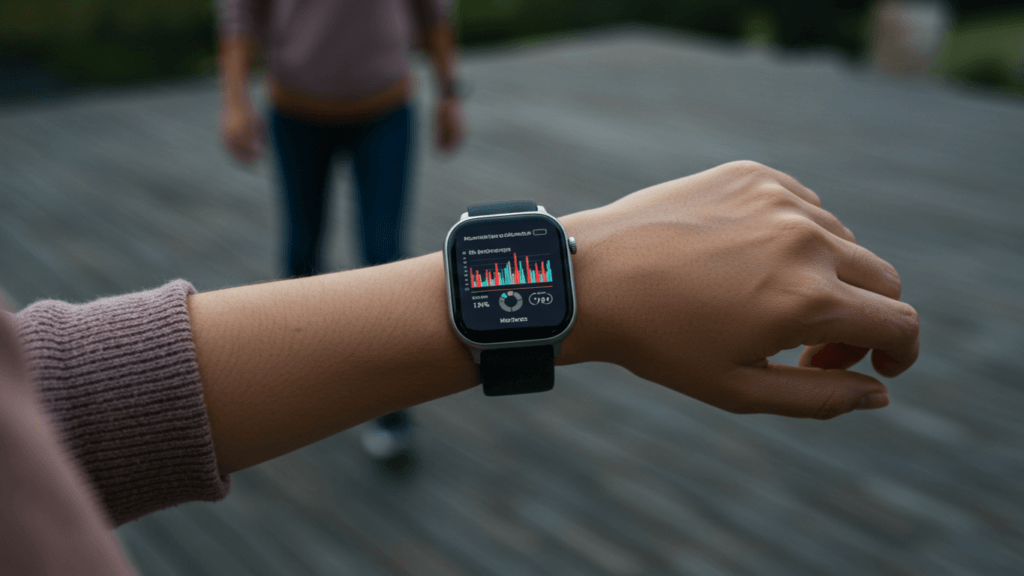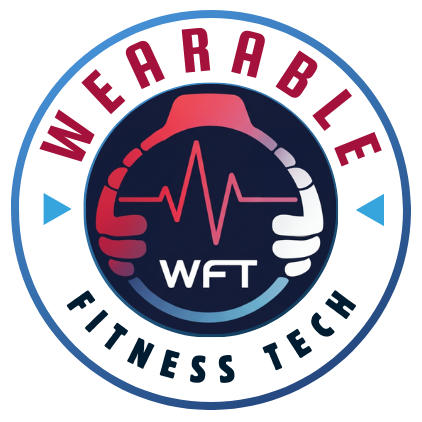
Welcome to our series on the Top 5 Trends Revolutionizing Wearable Fitness Technology. In this article, we dive deep into Trend #1: Non-Invasive Glucose Tracking, exploring how this breakthrough is reshaping health management. Be sure to check out the main article summarizing all five trends for a comprehensive overview!
Current State of Glucose Tracking
Traditionally, glucose monitoring involves invasive methods like finger pricks, which are not only inconvenient but also painful. These conventional techniques often discourage consistent monitoring, posing risks for diabetics. According to a review titled Non-invasive and Minimally Invasive Glucose Monitoring Devices, these methods are being challenged by innovative technologies that aim to improve accuracy and comfort.
The Rise of Wearable Technology for Non-Invasive Glucose Tracking
Wearable technology has become an integral part of modern healthcare. Devices like smartwatches and fitness trackers are equipped with features to monitor vital signs, and now, they are entering the realm of glucose tracking. The article Non-invasive Glucose Sensing Technologies and Products highlights how advancements in sensors and analytical techniques are pushing this transformation forward.
Key Technologies in Non-Invasive Glucose Tracking
Non-invasive glucose-tracking wearables use cutting-edge technologies, such as:
- Optical Sensors: Measure glucose levels by analyzing light absorption.
- Electromagnetic Sensors: Detect glucose concentrations in blood without requiring a blood sample.
- Sweat Analysis: Sensors analyze sweat composition for glucose levels.
These technologies not only ensure accuracy but also eliminate the need for invasive procedures, making health monitoring more comfortable and efficient. The review A Concise and Systematic Review on Non-Invasive Glucose Monitoring provides an in-depth analysis of these methods and their potential.
Trending Devices in Non-Invasive Glucose Tracking

The market has seen a surge in innovative, non-invasive glucose-monitoring devices that integrate seamlessly into daily life. Here are some notable examples:
- Freestyle Libre 2: A sleek, sensor-based device that provides real-time glucose readings through a smartphone scan. Designed for comfort and convenience, this device sets a new benchmark in wearable glucose tracking.
- SugarBEAT: An adhesive patch that utilizes electrochemical sensors for continuous glucose tracking. Its lightweight and discreet design make it a popular choice among health-conscious individuals.
- Dexcom G7: A patch-based glucose monitor that integrates with smartwatches, offering real-time data and predictive analytics. This device is perfect for those seeking a comprehensive health management solution.
- Biolinq: A next-generation sensor with a strong emphasis on accuracy and user comfort. Biolinq represents a step forward in non-invasive monitoring technology.
- Apple’s Future Glucose Monitoring Watch: While still in development, Apple is working on a non-invasive glucose-tracking feature for its smartwatch, leveraging Raman spectroscopy for accurate readings.
- Samsung’s AI-Enhanced Glucose Monitor: Samsung is developing a non-invasive glucose monitor integrated with AI for predictive health insights, further advancing the capabilities of wearable technology.
Non-Invasive Glucose Tracking for Diabetic Fitness Enthusiasts

For health and fitness enthusiasts who are diabetic, wearable fitness technology offers a unique blend of convenience and precision. Beyond monitoring glucose levels, these devices integrate features that cater to an active lifestyle, promoting better overall health and fitness outcomes. Here’s how non-invasive glucose monitors are transforming the experience for diabetics with a passion for fitness:
- Integrated Health Metrics: Many wearable glucose monitors come equipped with additional fitness tracking capabilities such as heart rate monitoring, step counting, and calorie tracking. This integration allows users to see how exercise impacts their glucose levels in real-time.
- Optimized Workouts: Wearables like Dexcom G7 and Freestyle Libre 2 empower users to optimize their fitness routines. Tracking glucose fluctuations during different types of workouts can help diabetics tailor their activities to maintain balanced levels and avoid hypo- or hyperglycemia.
- Insights Through AI: Devices such as Samsung’s AI-enhanced glucose monitor are perfect for fitness enthusiasts. These wearables leverage artificial intelligence to provide personalized health insights, helping users plan workouts and meals effectively.
- Diet and Recovery Monitoring: Advanced wearables also monitor post-workout recovery and suggest meal adjustments based on glucose readings, ensuring holistic care for fitness-focused diabetics.
By aligning diabetes management with fitness tracking, these wearables offer an unmatched level of control and insight for individuals who want to lead active, healthy lives despite their condition.
Explore More Trends in Wearable Technology

Excited to learn more? Our series covers five transformative trends:
- Trend #2: Sleep and Stress Monitoring: Prioritizing Holistic Wellness
Discover how wearables are revolutionizing wellness by focusing on sleep quality and stress reduction. Read the article →
- Trend #3: Smart Rings: Compact and Sophisticated Fitness Tools
Uncover the possibilities of smart rings, blending form and function for fitness enthusiasts. Read the article →
- Trend #4: AI-Powered Coaching: The Future of Personalized Fitness
Find out how AI-driven wearables are reshaping personalized fitness plans. Read the article →
- Trend #5: Solar-Powered Wearables: Sustainability Meets Technology
Explore eco-friendly innovations that marry wearable fitness tech with sustainability. Read the article →
Frequently Asked Questions About Non-Invasive Glucose Tracking
1. How accurate are non-invasive glucose monitors compared to traditional methods?
Non-invasive glucose monitors have significantly improved in accuracy, thanks to advanced technologies like optical sensors and AI integration. While they may not yet match the precision of invasive methods, ongoing research aims to bridge this gap.
2. Are these devices affordable?
The cost of non-invasive glucose monitors varies depending on the brand and technology. Many devices offer long-term cost savings as they eliminate the need for consumables like test strips.
3. What technologies are used in these devices?
These devices utilize optical sensors, electromagnetic sensors, and sweat analysis to measure glucose levels non-invasively. Emerging technologies like Raman spectroscopy and AI-driven analytics are pushing innovation further.
4. Are non-invasive glucose monitors widely available?
Availability is increasing, with new devices entering the market regularly. Many leading brands are also seeking regulatory approvals, making these devices more accessible worldwide.
5. How do non-invasive glucose monitors improve health management?
These wearables provide real-time data, encouraging consistent monitoring. They empower users to make informed decisions about diet, exercise, and overall health, improving diabetes management and general wellness.
6. How can wearable glucose monitors help fitness enthusiasts with diabetes?
These devices track glucose fluctuations during workouts, providing real-time insights into how exercise affects blood sugar levels. They help users optimize their fitness routines and maintain balanced glucose levels.
7. Can these wearables track other health metrics?
Yes, many glucose-monitoring wearables also include features like heart rate monitoring, calorie counting, and step tracking, making them versatile tools for overall health and fitness management.
8. Are there specific workout recommendations based on glucose readings?
Yes, wearables equipped with AI, like Samsung’s AI-enhanced glucose monitor, offer personalized suggestions for exercise routines based on glucose data, ensuring safe and effective workouts.
9. How do these devices support diet and recovery for diabetic athletes?
Advanced wearables analyze post-workout glucose levels and recovery needs, offering tailored dietary recommendations to maintain energy and glucose balance.
10. Can non-diabetic fitness enthusiasts benefit from these devices?
Absolutely. These devices provide insights into how their diet and exercise routines influence glucose levels, allowing them to optimize performance and overall health.
Final Thoughts on Non-Invasive Glucose Tracking
Non-invasive glucose-tracking wearables are revolutionizing diabetes management and transforming the lives of health and fitness enthusiasts alike. With cutting-edge technologies, seamless integration into fitness routines, and real-time health insights, these devices are paving the way for a healthier, more active lifestyle. As advancements in wearable technology continue, users can look forward to even smarter solutions that enhance both convenience and accuracy.
Call to Action
Are you ready to explore all the cutting-edge trends in wearable fitness technology? Dive into the main article summarizing the Top 5 Trends Revolutionizing Wearable Fitness Technology, or jump directly to Trend #2 to continue your journey through this exciting field!
